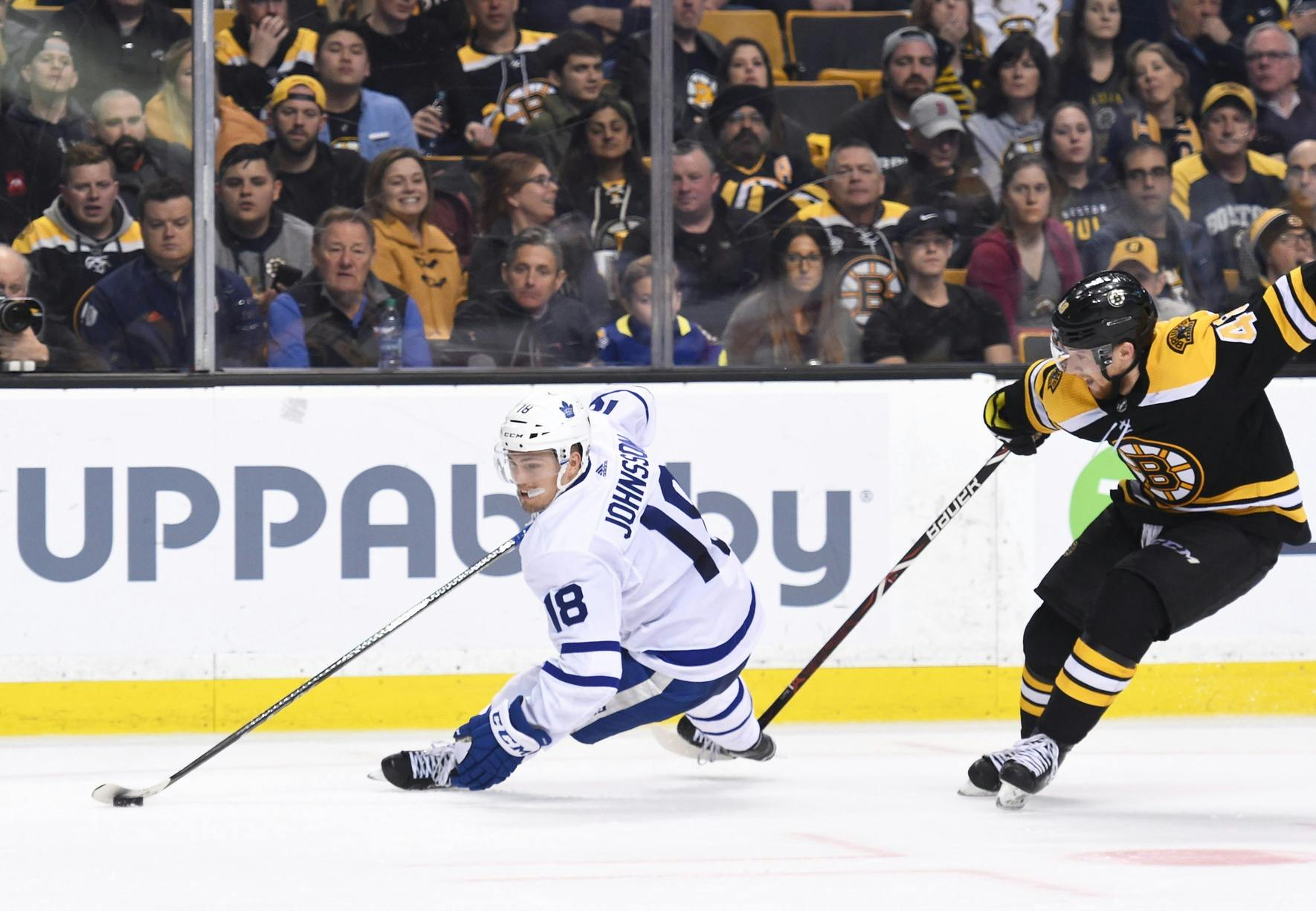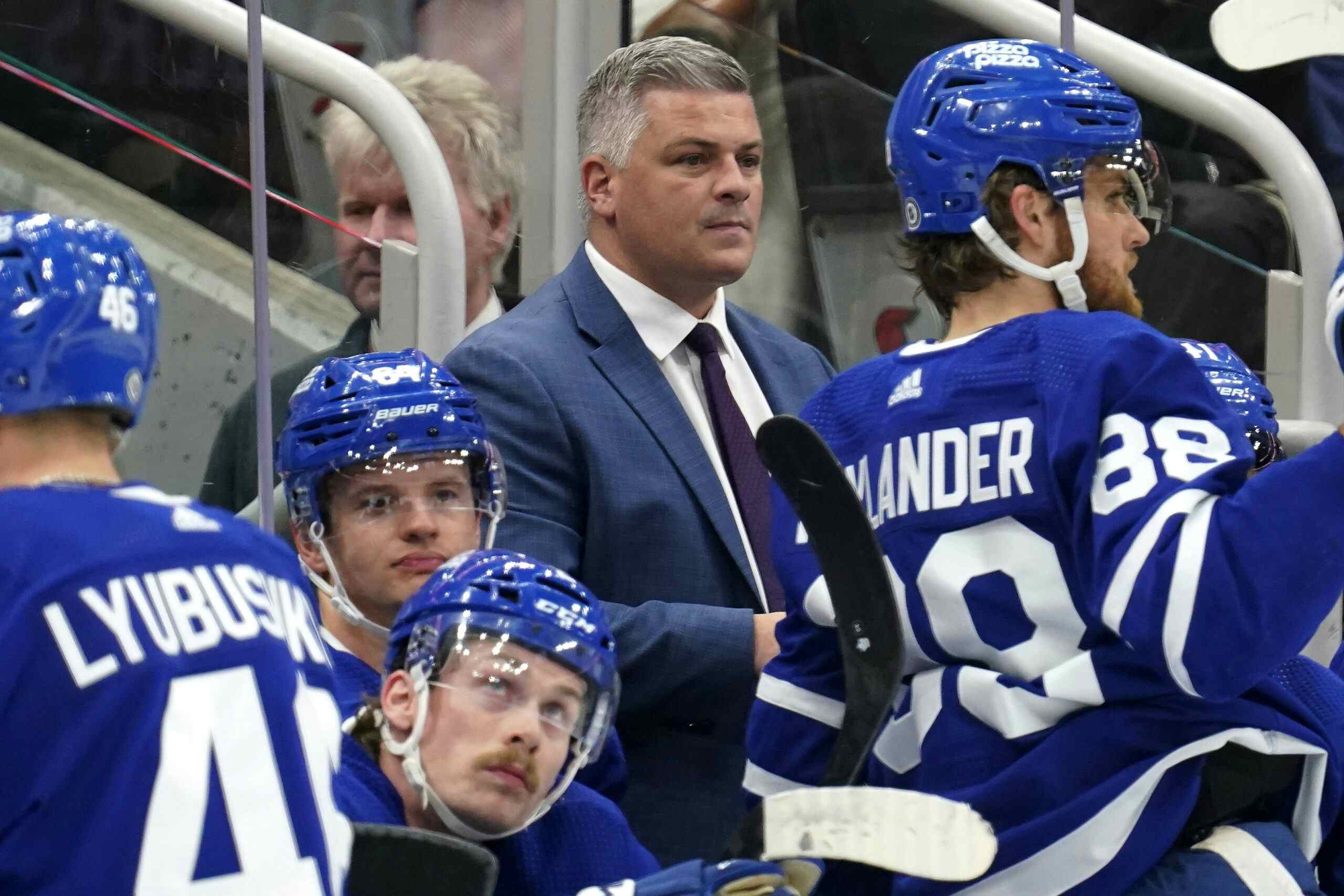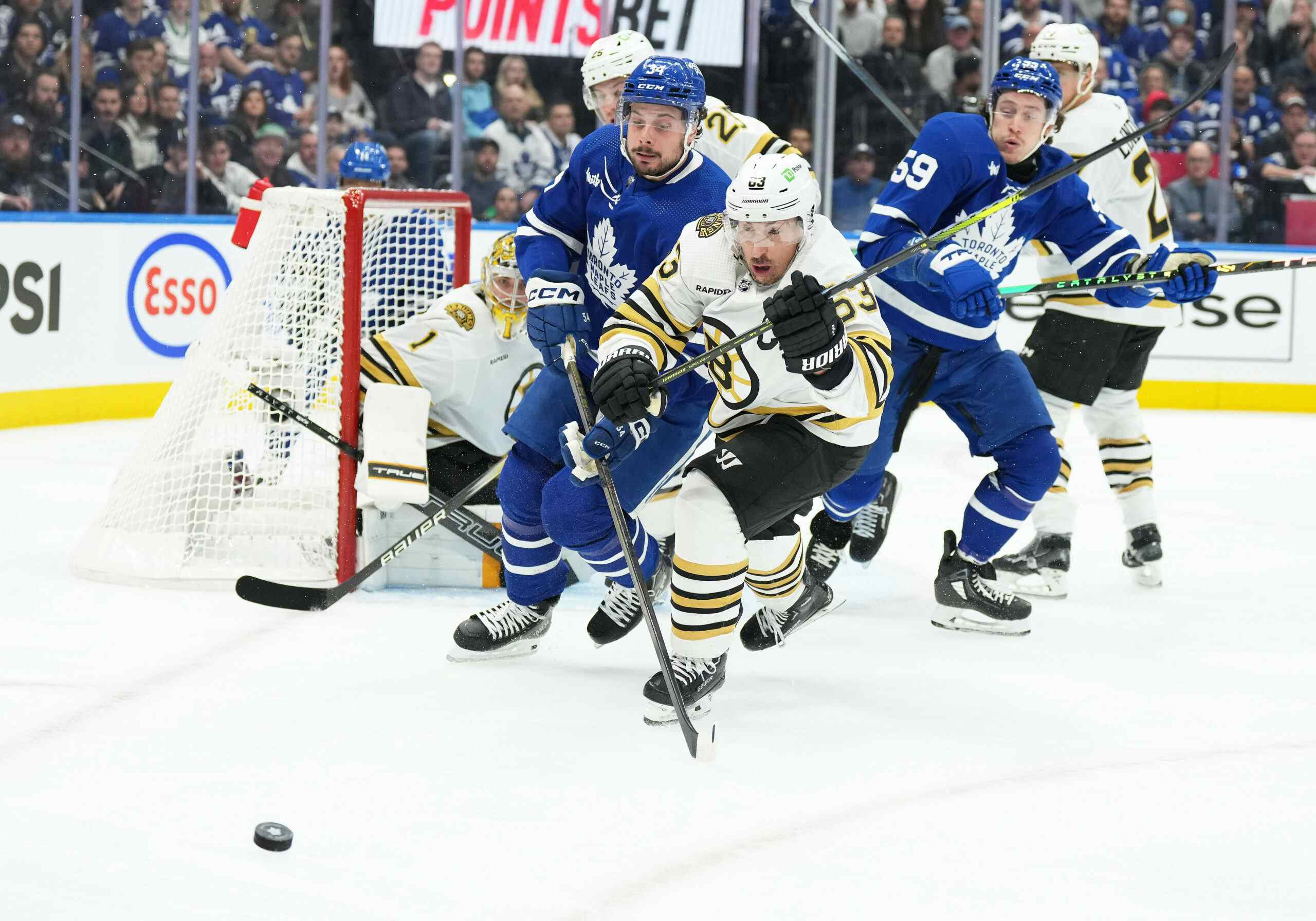RFAs, the Series: Andreas Johnsson

By Ryan Hobart
5 years agoThe next featured player in this year’s RFAs series is some new blood within the Leafs players who actually play with the big club: Andreas Johnsson.
So far we’ve covered William Nylander two days ago, and Martin Marincin and Justin Holl yesterday.
The Player
Who is Andreas Johnsson? The Swedish left winger was drafted by the Maple Leafs way back in 2013, way down in the 7th round.
He found out shortly after he was drafted that this whole time he had been playing with asthma. From an interview shortly after his draft+1 season, rookie-of-the-year campaign in the SHL (a presumably mediocre translation to English by Google Translate):
You have had a great season. How would you like to describe it yourself?“I learned last summer that I had asthma and got medication against it. That made me able to increase my stamina and even my level of really everything. I hurried to do everything at a higher pace, he says, continuing:“That I did so many goals came a bit like a surprise for me anyway. I had the goal of taking a place in the squad. I did that immediately and then I started making goals which felt a bit unexpected.
Since then, he’s continued his upward soar through the Leafs’ prospect ranks, and finished this past season carving out a role on the big club. I’m sure the journey has been long, but once he made it, by golly did he splash onto the scene. To start the year, Johnsson went down to the Marlies system. Realistically, the Leafs had so many forwards that there wasn’t any room for him. It took moving out Nikita Soshnikov, moving on from Matt Martin, and an injury to Leo Komarov to get Johnsson into the lineup. Once he made it to the Leafs, he was a 4th liner, but broke into both special teams units as well to become an important part of the team already.
The Numbers
When with the Marlies, he had 54 points in 54 games this year, on top of 47 in 75 games the season prior. He was obviously quite a star at that level, earning himself a call-up for his first stint in the NHL.
In his first 15 games there, regular season and playoffs, Johnsson had 5 points, with 3 of them (all goals) coming at even strength; a pretty good debut considering that he played 4th line minutes mostly.
As for shot attempts, he maintained a 51.48% Corsi For (so they had a few more shot attempts in favour than they did against). That’s definitely respectable, and kind of what you’re hoping for from your 4th line. That Johnsson can do that and provide scoring is definitely an advantage that the Leafs will want to capitalize on.
The Money
There’s a big question around Johnsson’s contract future. Technically, he’s a depth player at this point, and they should be looking to avoid going for long term. But knowing the level of skill he might be able to bring in the top 6 in the future, and the limited amount of experience he has, there’s a potential to go for longer term and lower cost to get lots of value long term. So which direction do you go?
The Leafs went with mid range term for Brown and Hyman, extending them for 3 and 4 years respectively at less than $2.5M cap hits. In terms of longer term, there’s the oft-quoted example of the Nashville Predators doing this with Calle Jarnkrok. He’s in the 2nd year of a 6 year contract, worth a $2M cap hit.
At the time, Jarnkrok had much more NHL experience than Johnsson does right now, so this may not be the right bet to make. The evidence we’re going on that Johnsson is good enough to be signed long term is largely based on SHL and AHL performance. Not to say those things aren’t valuable, but it’s hard to stack that up against the 187 games of NHL hockey Jarnkrok had played (regular and playoff) when Nashville made this move.
Knowing that despite having one mediocre and one good year in the NHL, Jarnkrok was still willing to sign on for a 6 year term at such a low cap hit, maybe the Leafs would be better off giving Johnsson a bit more NHL time to see how that works out. Or, maybe if they go long term now, they can get a cap hit even lower than $2M because of that lack of experience. At that amount of money, the worst case scenario is that he’s so bad that no one will trade for him, the Leafs have to bury him in the minors, which will cost of their 50 contract slots, and they’re stuck with less than $1M on the cap long term.
Anyway, after that lengthy preamble, here are my predictions:
Optimistic: $2M for 6 years
Realistic: $1M for 1 year
Pessimistic: $1.25M for 2 years
So in this case, I’m pessimistic if they go for 2 years because I think that’s just adding unnecessary risk. It does buy you a lot of time to evaluate Johnsson in what should both be full seasons in the NHL. However, you’re also making it less likely that Johnsson is willing to re-sign at a long term, low cap hit contract. The more evidence you have that he’s good, the more he’s going to cost. I think this is being too cautious with making a bet on Johnsson’s long term future.
I didn’t consider 3 or 4 years because I’m certain the Leafs will realize that’s just putting themselves at the most risk. At the end of a 3 year contract, it’ll be Johnsson’s last year of RFA eligibility, which means every year past 1 year term you’re buying UFA years in the prime of his career. They’d be cornered into signing Johnsson for big money if he becomes a big part of the team. Without a doubt, that’s going to cost you more than right now. Similarly, at the end of 4 years, he’d be an unrestricted free agent, so you might end up losing him entirely in the negotiation process, or have to pony up for a full UFA contract.
In the optimistic case, you get to buy two of those UFA years right now, at cheap cost, because you’re doing Johnsson the favour of providing long term stability for he and his family. 5 year term would also work, but that’d be only 1 year of UFA time bought. 7 or 8 years, at this point, seems ludicrous, since that’s such a long time you’d have to carry that ~$1M of dead salary if Johnsson ends up not being able to cut it at the NHL level.
Realistically, though, I think it’ll be one year. This gets them into a year where some money comes off the books in Hainsey, and possibly Gardiner. Since Matthews and Marner’s deals will be kicking in, there will likely be a lot of moving parts to make the money work and you can see how you want to fit in Johnsson at that time. It would be a good time to get shrewd and cut someone who isn’t a long term contributor and replace them with an ELC, should Johnsson not work out the way we all hope.
Conclusion
Well that’s a lot of thinking out loud (well, not really) but I think I have it laid out nicely. I’m aware I casted a pretty wide net with these contract proposals, especially with the term, but hopefully my explanations justify that. A lengthy preamble followed by a lengthy epilogue, I hope I didn’t put you all to sleep. I just find all the possibilities to be riveting. *nerd emoji*
Sincerely, I hope you enjoyed this and the rest of the series so far. Tomorrow, I’m going to look at two expiring deals for minor league centers, Miro Aaltonen and Frederik Gauthier, so keep a lookout for that! And as always, let me know your thoughts in the comments.
Recent articles from Ryan Hobart





